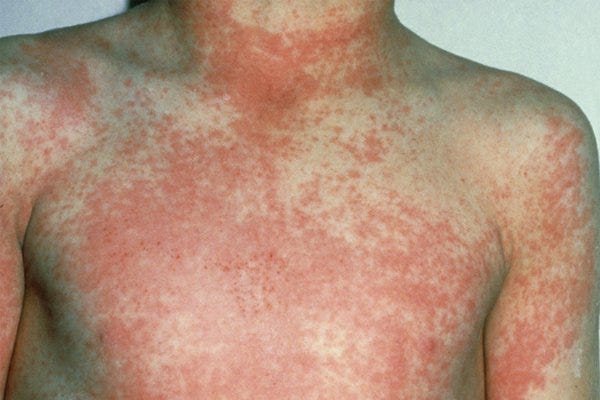My Worst Weekend in A&E ever..
Eight deaths due to group A strep so far - a huge worry for parents.
Ever seen those tabloid newspapers post pictures of a crazy A&E department? That was the case with the A&E I work at over the weekend just done. As I walked into the paediatric side of A&E I heard a barrage of children crying, parents pleading for their children to be assessed and clinicians trying to see patients in any corner they could find.
.. It was pretty horrendous.
At one point there was a total of 6 clinicians including doctors and ACPs trying to get on top of a list of patients who were booking at a rate of 15 patients per hour. Why were they coming in such droves you ask? The answer is group A streptococcus or more commonly known as scarlet fever.
Having spoken to my primary care colleagues I’m aware that the situation is no different with on- call lists being filled with ‘?group A strep.’ It has caused the death of 8 children so far and there is certainly a reason for parents to be worried.
Here are some useful summary points about identifying and treating Group A Strep in primary care and secondary care. These points have been extracted from the brilliant don’t forget the bubbles blog.
Group A strep is found in the skin and throat of 20% of children. It only causes a problem when it causes an infection.
The infection has various stages. It starts of with a high temperature and sore throat which then progresses to a characteristic sandpaper rash and strawberry tongue.
Scarlet fever is a clinical diagnosis although a swab can confirm the diagnosis. Hospitals and general practices are now advised to send in swabs.
The complications are local infection including tonsillitis and otitis media. The complications should be treated with antibiotics. In adults, the main complication is invasive group A strep (IGAS) which presents as sepsis.
The mainstay of treatment for simple scarlet fever is conservative management. Advise patients to keep their children well hydrated and administer regular antipyretics. The jury’s out about antibiotics but if you’re really worried about the child, prescribing some pen V isn’t a bad idea.
As for exclusion - if the child has had antibiotics then they can return to school after they’ve had 24 hours of antibiotics. If you decide to manage conservatively then the exclusion period is 2 weeks.
At my trust we’ve been giving antibiotics. Parents are incredibly worried and emergency departments are absolutely packed. Be thorough in your search for secondary complications including tonsillitis and otitis media and be sure to safety net appropriately. If you’re based in primary care, be sure to refer to the traffic light system and refer appropriately.
Sign up to our next webinar
We continue our monthly webinar series with a four hour feature on gastroenterology. Join us live on Microsoft teams to learn about the basics off gastroenterology and the most common diseases. There are also 2 CPD points on offer!
Be sure to sign up as there are limited spaces!
Check us out on our various pages
Website: www.paretoeducation.co.uk
Instagram: www.instagram.com/pareto_ed
Twitter: www.twitter.com/pareto_ed
Youtube: https://bit.ly/3DPm23c
Email: paretopaeducation@gmail.com






